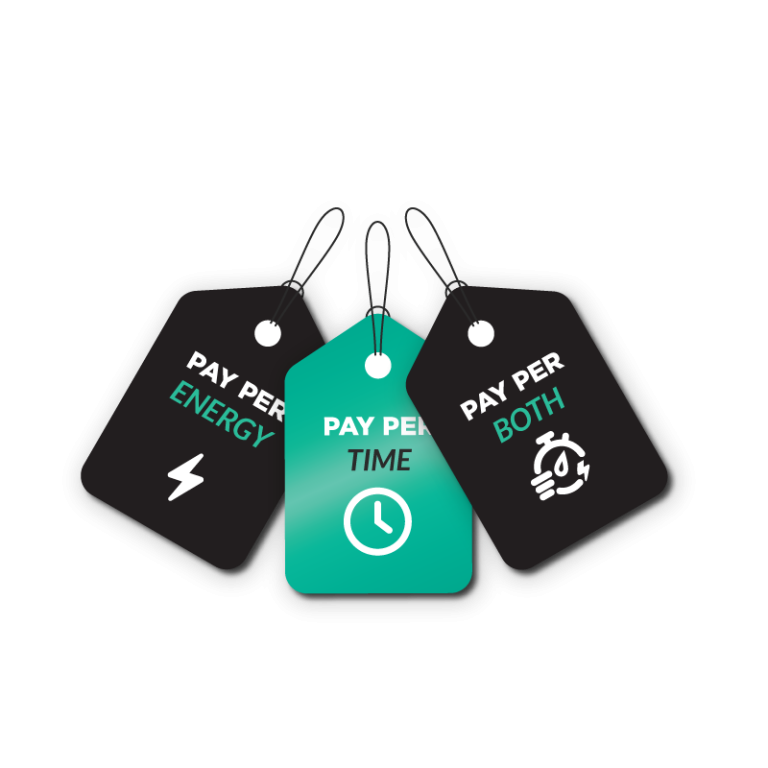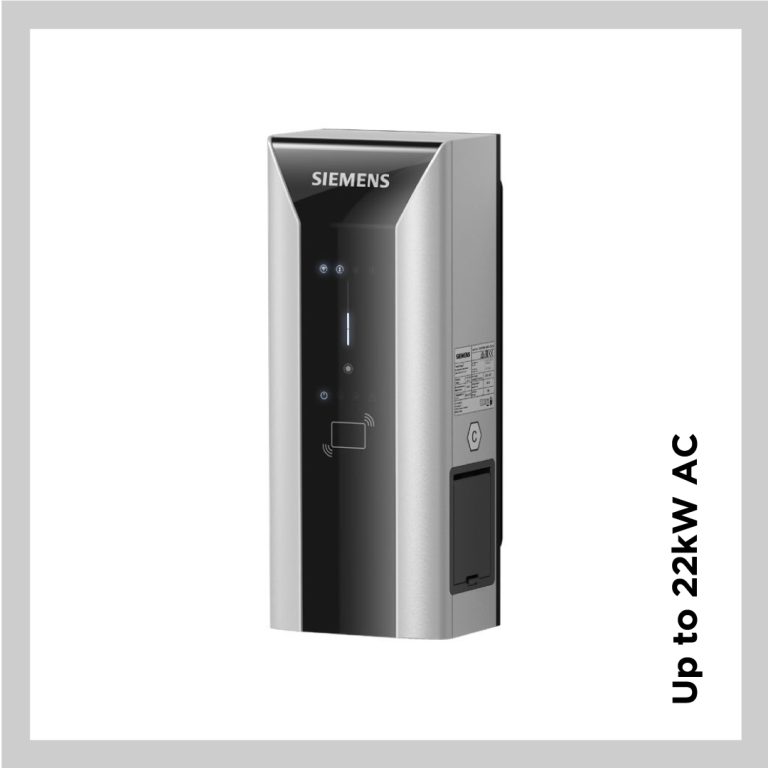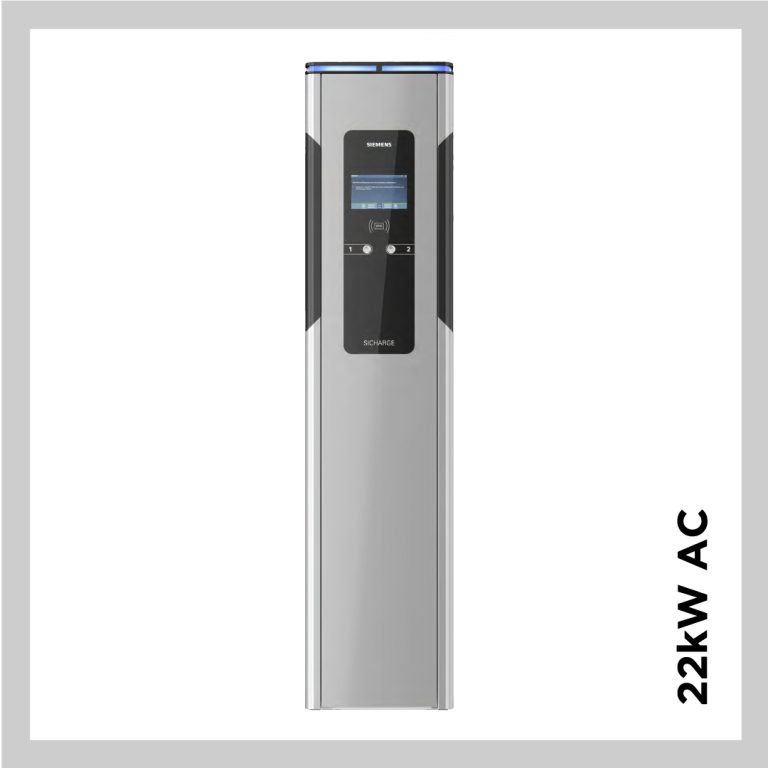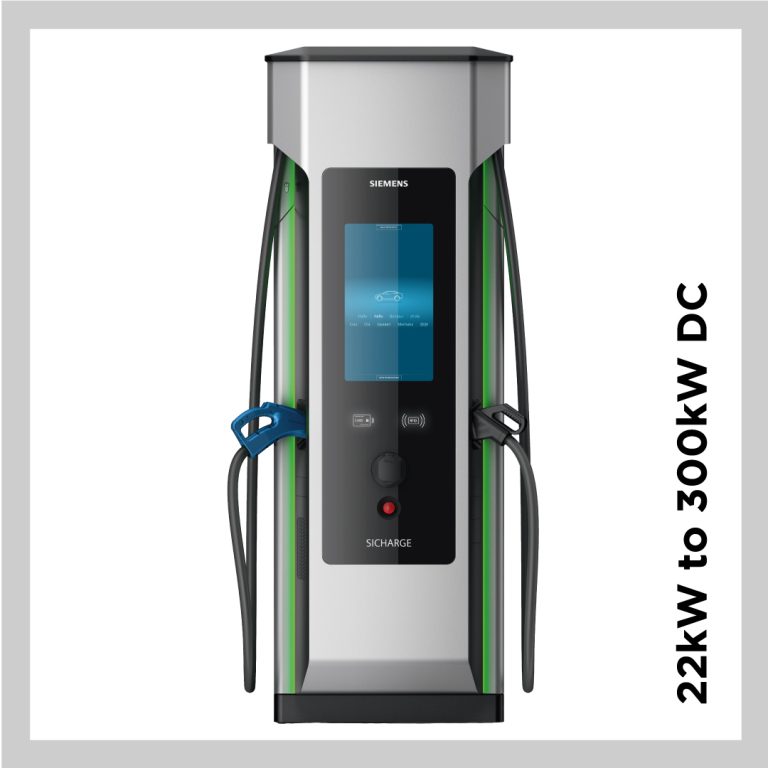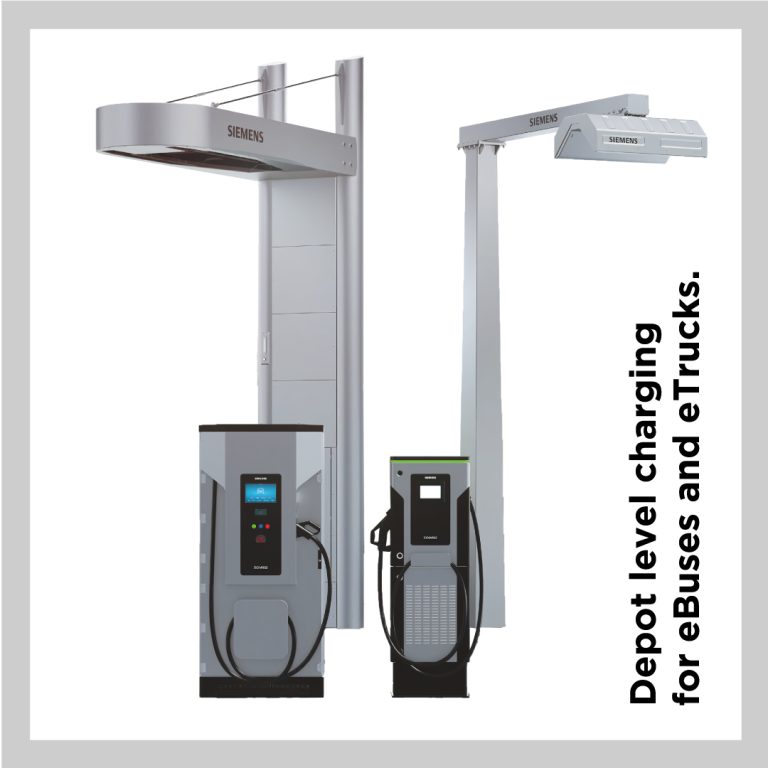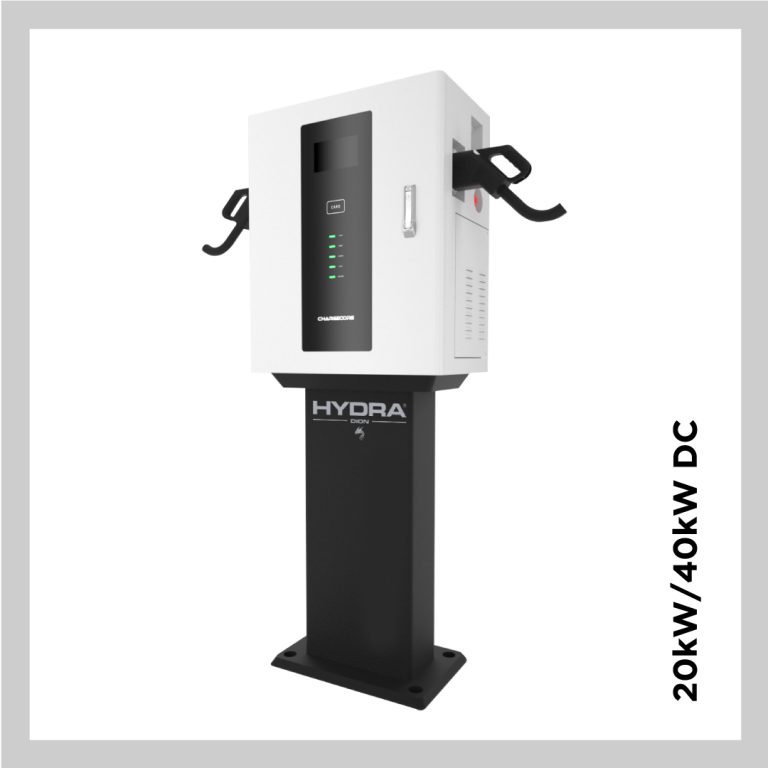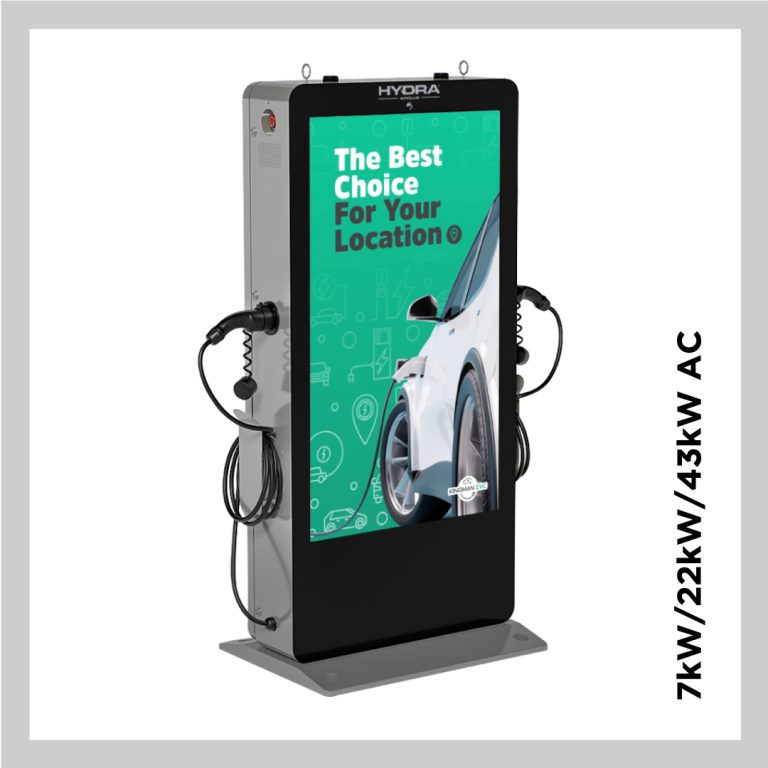Our Range of EV Chargers for Businesses
Kingman have introduced Siemens EV chargers to the W.A. S.A. & N.T. markets. With over,000 installed chargers globally our chargers have a track record of delivery. With level 2 AC chargers from 7 kW to 43 kW and DC chargers from 50 – 800 kW, we can provide a complete range of chargers for commercial applications.
EVC Components
Electric Vehicle (EV) chargers hardware typically consists of several key components that work together to facilitate the charging process. These components include:
Power Supply: The power supply is responsible for providing the electricity required to charge an EV’s battery. It typically consists of an AC/DC converter that converts the AC power from the grid to DC power that can be used to charge the battery.
Connector: The connector is the interface between the EV and the charging station. It typically consists of a cable and a plug that connect to the EV’s charging port.
Communication System: The communication system is responsible for managing the communication between the EV and the charging station. It typically uses a protocol such as the Open Charge Point Protocol (OCPP) to exchange information between the two devices.
Control System: The control system is responsible for managing the charging process. It monitors the battery’s state of charge, adjusts the charging rate to avoid overheating or overcharging, and communicates with the EV’s on-board charger to ensure that the battery is charged safely and efficiently.
Metering System: The metering system is responsible for measuring the amount of energy that is delivered to the EV. This information is typically used for billing and tracking purposes.
Enclosure: The enclosure is the housing for the EV charger hardware. It protects the components from the elements and provides a secure and safe environment for the charging process.
Overall, EV charger hardware is designed to provide a safe, reliable, and efficient charging experience for EV drivers. With the increasing popularity of electric vehicles, the development of new and advanced charger hardware is likely to continue in the coming years.
Align charging speed with your business model
Choose Level 2 AC charging for locations where drivers spend a few hours parked. Opt for DC fast charging in spots where drivers will be around for an hour or less.
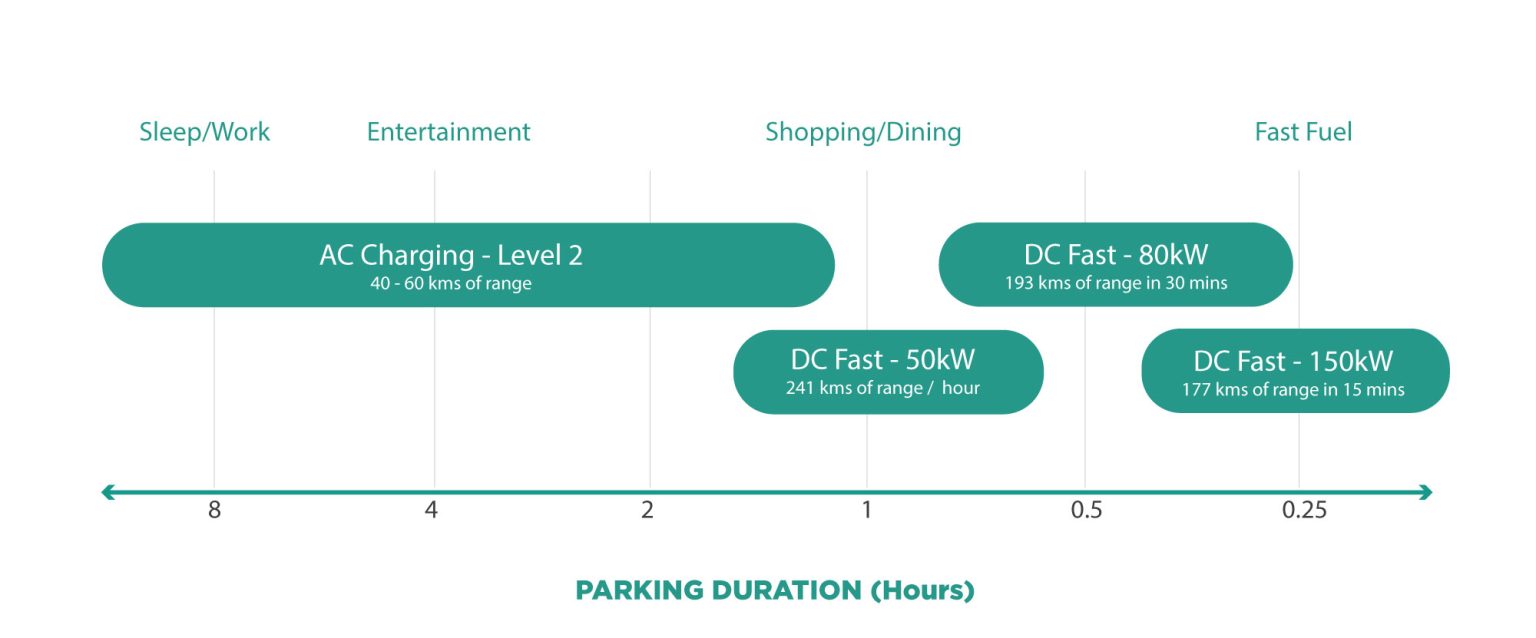
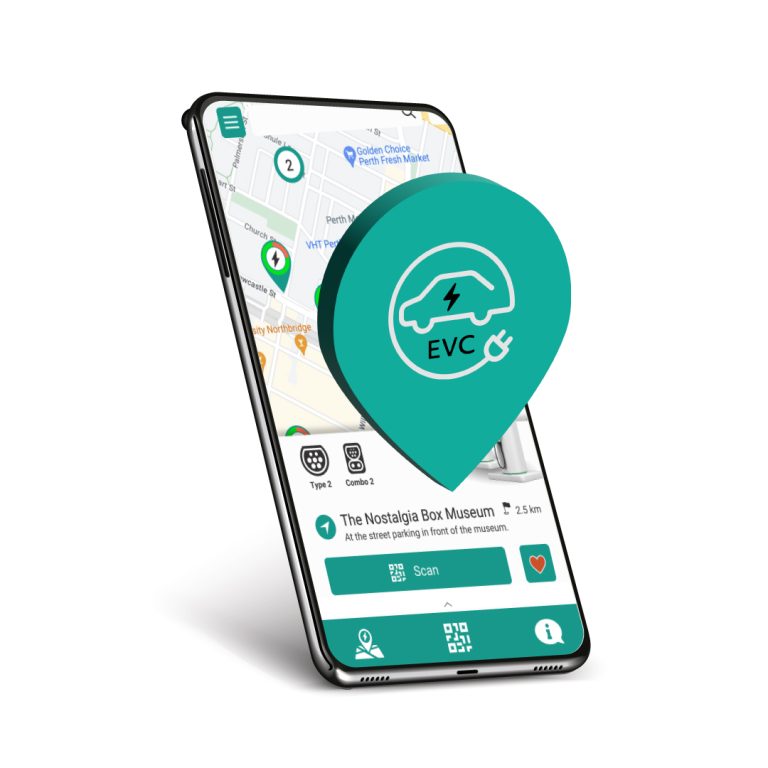
Kingman EVC's app makes your charging station easy to find!
Kingman EVC will increase your charging station’s visibility among EV drivers by featuring your charging station on popular platforms such as the Plugshare charging app, in-vehicle systems, Apple CarPlay, and Android Auto, among others. With Kingman’s EVC App, EV drivers can easily locate your charging station through the app’s interactive maps, driving more customers to your business.
Offer a premium charging experience for your end users
Distinguish yourself from your competitors by offering top-of-the-line charging stations that boast exceptional quality. To further set yourself apart, Kingman can create unique video content for the Apollo charger that showcases your charging stations, your business and your product or service offering. This will help capture the attention of your customers and elevate your brand image.
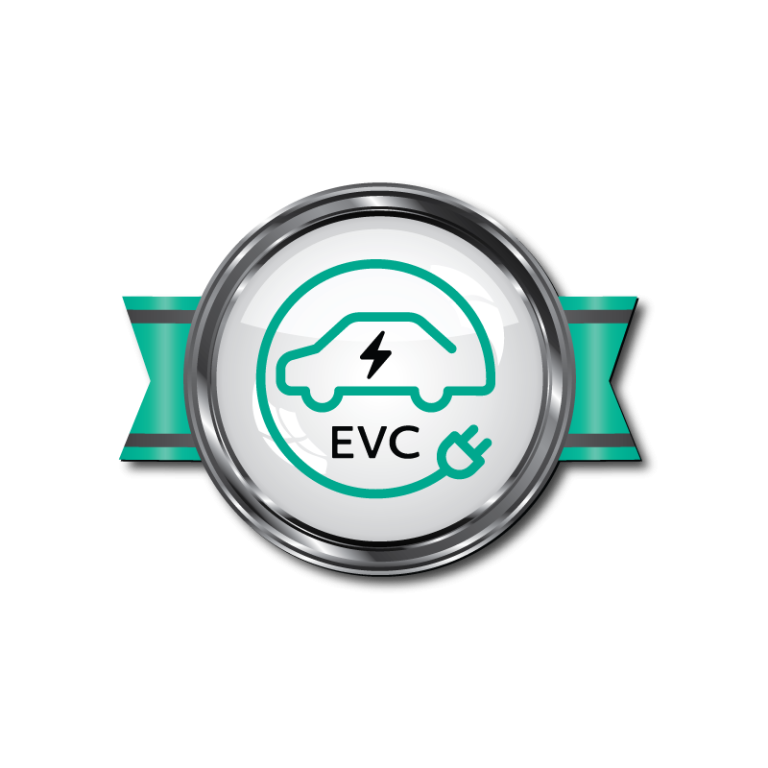

Increase retail spending
Entice EV drivers to spend more time in your store by inviting them to charge their vehicles while they shop. The longer dwell time can lead to increased sales and larger average purchase sizes. By offering charging as an added service, you create a more convenient and welcoming environment for customers to recharge themselves and their vehicles, which may incentivize them to spend more time browsing and making purchases in your store. If you are providing chargers for your staff, this goes straight to incentives and staff retention.
Develop pricing and payment options that work for your business
Flexible pricing options can be a great way to make electric vehicle (EV) charging work for your business, by providing a way to generate revenue and ROI on your EVC investment, while also meeting the needs of EV drivers.
Kingman EVC’s cloud-based billing platform allows for multiple pricing options.
One way to implement flexible pricing is by setting fees based on time. For example, you could charge a certain amount per hour or per minute of charging time. This can be a good option if you want to encourage drivers to move their vehicles once they’re done charging, as they’ll be more likely to do so if they’re paying for the time they use.
Another option is to charge fees based on energy usage. This can be done by measuring the amount of electricity used during the charging session and charging a certain rate per kilowatt-hour (kWh). This can be a good option if you want to encourage drivers to charge their vehicles to full capacity.
A combination of time and energy-based pricing is also possible. For example, you could charge a certain fee for the first hour of charging, and then switch to an energy-based pricing model for the remainder of the session. This can provide a good balance between encouraging turnover at your charging stations while also ensuring that drivers have access to a full charge.
